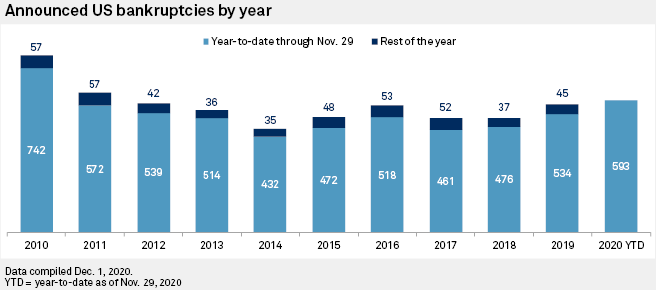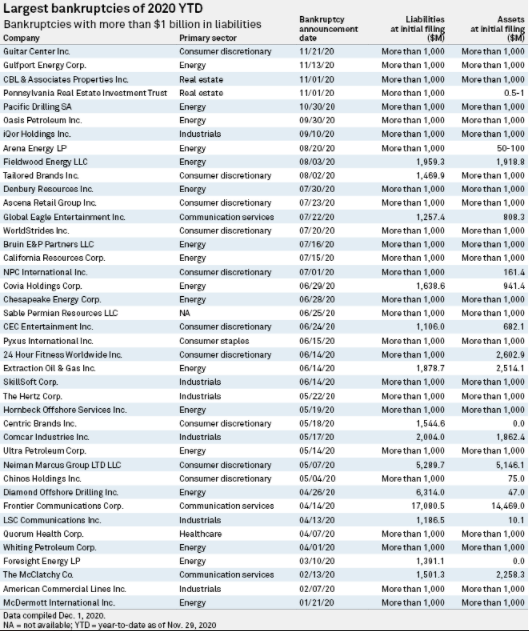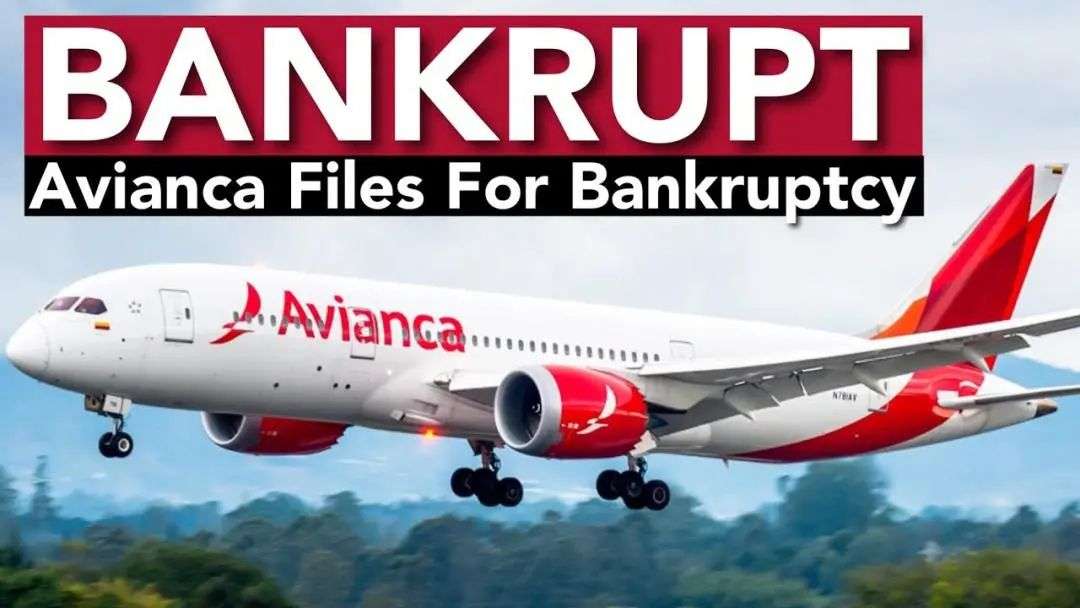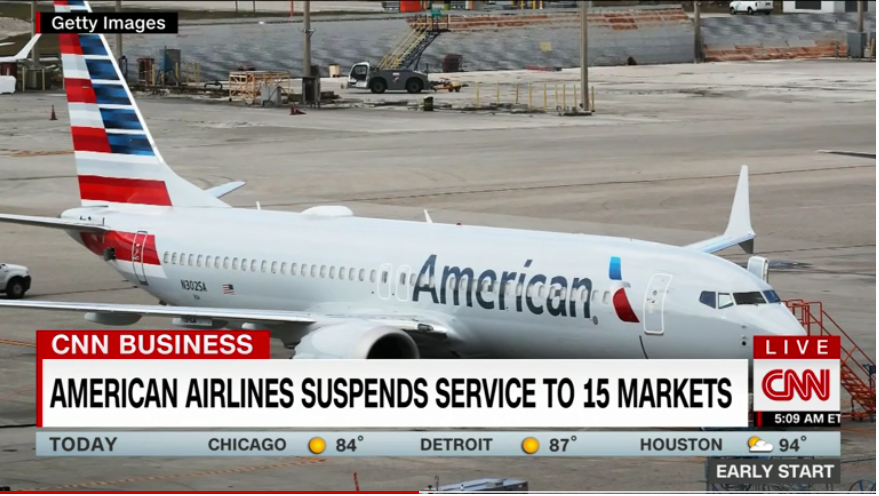This is also a new kind of shuffle during the crisis.
Editor’s note: This article from the micro-channel public number “Silicon rabbit race” (ID: sv_race), of: Amelie.
2020 has brought disastrous results to many industries, but on the other hand, it has become the soil for many companies to flourish
At the end of the year, we should conclude that 2020 is almost over. Looking back, reality is better than movies.
Brooks Brother, an old clothing store with a history of more than 200 years, has survived the two world wars but has not survived the impact of the epidemic. As one of the few companies that produce clothing in the United States, in this epidemic Filed for bankruptcy during the period;
Hertz, one of the world’s largest car rental companies, was overwhelmed by the epidemic and filed for bankruptcy in May;
GNC, one of the world’s largest health care companies, filed for bankruptcy during the same epidemic;
The First State Bank, a century-old bank established in 1902, became the first bank to go bankrupt in the epidemic;
The same fate also includes the former super unicorn, OneWeb, a startup technology company in the satellite Internet industry, the famous American fitness chain 24Hours Fitness, the former AI star Wave Computing, the streaming media market’s Epiphany Quibi, etc…< /p>
On the other hand, Tesla’s stock price hit a record high at the end of the year, with a total market value of nearly US$500 billion, and the world’s highest market capitalization car company. Elon Musk has become the world’s second richest man after Bezos; /p>
Stripe, as a new unicorn in the mobile payment field, raised US$250 million in September, with a valuation of US$35 billion;
Airbnb, as a star unicorn valued at US$47 billion, went public on December 10;
Snowflake, the fastest-growing cloud computing service company in Silicon Valley and the most watched technology company in 2020, was listed on the New York Stock Exchange on September 16. It was once famous for its $500 million investment from Buffett’s Berkshire and software giant Salesforce, and the acquisition of its $250 million stake;
Instacart, as a groceries delivery platform company favored by the epidemic, announced in June that it had received a new round of financing of US$225 million, with a valuation of US$13.7 billion. It is expected to go public at the end of the year to catch up with the e-commerce boom under the epidemic…
In the turmoil of this year’s entrepreneurial environment, many growing companies have felt the lack of growth, so that they are caught in a dilemma and struggle.
But there are also many companies facing the new model and new stage of business in the special consumer entrepreneurial market, trying their best to transform and evolve. Under the new economic normalComplete model innovation.
Obviously, the projects that are moving upstream are stepping on the beat of the times; and those falling in the big storms of the big era, in addition to sighing for the difficulty, can also give entrepreneurs some warnings about the pitfalls This can be circumvented.
Today, let’s take a look at the companies that have fallen this year.
The former star unicorn was born at an untimely time
The threshold of $1 billion valuation has always been a high and hopeful goal that countless startups can hardly reach. Only in this way can it be called a “unicorn.” The growth of a unicorn company has always been on the road paved by capital.
In this year’s environment, if the fate is bad and untimely, the next round of financing is not available in the middle of seeking a listing or being acquired, or the valuation shrinks, then the unicorn that has been brilliant in the early stage, Entering a period of recession, even bankruptcy is not unexpected.
In the satellite Internet industry where fate is bankruptcy, OneWeb’s future is unknown
On March 28, a unicorn company with a valuation of 8 billion U.S. dollars-satellite operator OneWeb announced that it filed for bankruptcy protection, and then received a new round of financing on July 4 and barely “extended life”, the future is unknown.
Greg Wyler, the founder of OneWed, joined Google in 2012 as the head of satellite business and founded OneWeb. The original vision was to promote his poverty alleviation and use low-Earth orbit satellite technology to build a low-cost global Broadband communication network makes it easy for the hardworking people who were not covered by the network to surf the Internet easily.
Picture source: OneWeb
As of filing for bankruptcy, OneWeb has received nearly US$3.4 billion in investment from industry giants including Airbus, Coca-Cola, Virgin Group, and Qualcomm, led by SoftBank.
Although OneWeb uses the financial impact and market fluctuations related to the new crown epidemic as reasons for applying for bankruptcy protection, it also has various pain points:
-
The company’s initial financing of US$3.4 billionThe yuan has been exhausted, and it has been unable to continue to repay the loan and interest;
-
Since its official operation in 2012, OneWeb has not had any economic income;
-
SoftBank Group has invested a total of approximately US$2 billion in OneWeb and holds nearly 40% of OneWeb. In August 2019, SoftBank has halved the valuation of its assets in OneWeb and has given up on continuing investment;
-
The global landing operation plan cannot be achieved. The expected receivables cannot be achieved. It is difficult to land in Russia, India, and China;
-
In the face of a limited global market, Starlink greatly reduces the market space of OneWeb. Starlink is the space service company SpaceX of Elon Musk, the world’s second richest man, announced in 2015 that it launched a low-Earth orbit satellite cluster to provide high-speed Internet access services covering the world.
There are many companies affected by the epidemic, but the investment is huge and the cost is far beyond the budget. Investors cannot protect themselves, market access is blocked, and powerful competitors divide the market together are the internal reasons for OneWeb to file for bankruptcy protection.
Almost no company in all similar constellation plans can escape the fate of bankruptcy. This time, the two “saviors” that helped OneWeb weather the crisis are the investment agency of the British government and the Indian telecom operator Bharti Global, each with a capital of 500 million Yuan became the largest shareholder of OneWeb.
Although life will be renewed for the time being, OneWeb is still alive or dead. In the final analysis, a super project like satellite Internet is too difficult to make short-term profits. It may only achieve sustainable development if it solves the cost and efficiency problems, realizes self-blood formation, and avoids capital investment in black holes. (Extended reading???? Obviously lost to SpaceX, why can OneWeb still get the money from the British government?)
Former AI star, Wave Computing curtain call
On April 19, Semiwiki reported that Wave Computing was closing soon and was applying for bankruptcy protection.
In the field of AI chips, seeing him rise up, see him banquet guests, see him collapse.
Ten years ago, when Wave Computing was founded in California, the AI boom was in the ascendant. He was once a rising star and was hailed as one of the world’s most promising AI companies and one of the most watched unicorns in the AI computing field.
Two years ago, Wave Computing acquired the veteran semiconductor IP company MIPS. It plans to combine its data flow architecture with itsThe combination of MIPS embedded RISC multi-threaded CPU core and IP provides power for the next generation of AI. At that time, the outside world thought that Wave Computing had the potential to compete with Intel and Nvidia.
Also in December of this year, he announced the completion of the $86 million Series E financing, which was led by Oakland Corp.. After this round of financing, Wave Computing has accumulated more than $200 million in financing.
Like many tragedies, under the blessings of various external auras, it is still unable to withstand the baptism of the wave of the times. The original confidence has gradually disappeared in the past two years, and finally fell into the sand. After all, he did not survive the day of victory against the new crown pneumonia, and he fell.
The collapse of Wave Computing has a lot of analysis in the AI chip industry. In addition to the general environment of the epidemic, it is also a superposition of various reasons. It may be that the core products are not competitive enough, or the management’s frequent exchange of blood financing strategies are chaotic and the MIPS open source plan is stranded.
In the face of the public crisis of this year’s epidemic, once the capital side’s blood transfusion cannot be continued, AI companies that are trapped by financial pressure will either quietly close their doors or begin to seek listing or asset restructuring.
The inspiration given by Wave Computing is:
-
You must protect your cash flow at all times, especially when the environment is bad;
-
Technology is not a huge profit, how to realize the technology is the top priority of AI enterprises;
-
For AI companies, survival is the first priority. Keep a low profile and restrain the expansion speed. After all, the future is very long…
Will it get better in 2021? It is hard to say that the bankruptcy scene may have just begun in the AI company group.
Quibi’s short life is the epiphany of the streaming media market
Quibi’s name comes from “Quick Bite”, which means “fast food, snacks”.
Quibi was officially released in April during the year when the epidemic was in force, and it was announced to close in late October. It will officially end operations on December 1. This has not survived a short-lived 7-month period, and it is also the first in the streaming media war. Home victim.
Is Quibi’s short life inevitable in the epidemic era? Not necessarily.
Wall Street observers believe that this year’s new crown pneumonia epidemic is part of the cause, but it is not the culprit. The real reason is that Quibi’s philosophy and business model have problems.
U.S. mediaPeter Csathy, the founder and chairman of the consulting company CreaTV Media, summed up the reasons for Quibi’s failure and said that Quibi’s marketing methods were obviously wrong,
“Young people don’t understand what Quibi is or why they should pay attention to it.”
“Quibi’s content has no social attributes at all. It is difficult for viewers to share the above content, so it is difficult to increase the click-through rate and successfully spread.”
CFRA Research analyst Tuna Amobi called Quibi “the most famous startup that has failed so far,” and said, “I can only say that it was born out of time and became a high-profile The victims are not surprising.”
Of course, as Katzenberg and Whitman stated frankly in their open letter announcing the closure of the platform:
“Because the idea itself is not enough to support a separate streaming service, or because the timing of the release is wrong.” Their conclusion is, “We can’t know the real reason, but we guess it is a combination of two factors. “(Extended reading ???? Debut is the pinnacle, burned 1 billion Quibi and died)
Big but not down?
Tired of pressure to file for bankruptcy, trapped in the uncertainty of the new crown
The number of corporate bankruptcies in the United States is still increasing daily.
As of December 2, there were 593 large-scale companies filed for bankruptcy in the United States this year, more than the number of bankruptcy applications at any time in the past decade.
Picture source: S&P Global Market Intelligence
Among them, the largest number of large-scale enterprises went bankrupt in the big consumer industry, up to 117, 82 in the industrial category, and 66 in the energy category.
From the perspective of assets and liabilities, 42 companies have debts of more than $1 billion, including Oasis Petroleum Inc., Chesapeake, the third largest natural gas producer in the United States, 24Hours Fitness, and JC Penney equalsFee industry company.
Picture source: S&P Global Market Intelligence
Although applying for bankruptcy protection does not mean direct bankruptcy liquidation, which means that these brands may not disappear forever, but continue to maintain operations and repay loans in the process.
However, the reality is that among these companies that file for bankruptcy protection, only 10%-15% of the companies can “resurrect”, especially in the current severe market, the proportion will be even smaller, and most companies cannot withstand this. Consumption.
In the four foundations of the big consumer industry-“clothing, food, housing, transportation”, almost face a new situation of reshuffle.
Depression in the Fashion Industry
Like many traditional industries, the fashion industry cannot do without social interaction. When people became accustomed to home isolation, it didn’t matter to wear home clothes or even pajamas at home, social activities decreased, people’s demand for new clothes decreased significantly, and the clothing industry experienced a visible depression.
True Religion is an American high-end jeans brand, which claims to be the sexiest denim brand in Hollywood and filed for bankruptcy protection on April 13;
J.Crew was once famous for being favored by former first lady Michelle Obama, and was widely loved by middle-class young people. When it was submitted for bankruptcy protection on May 4, it had a debt of US$1.7 billion;
Neiman Marcus, a 113-year-old American luxury department store, filed for bankruptcy on May 7, becoming the first department store chain group to fall during the epidemic. The group also owns New York’s top luxury department store Bergdorf Goodman and e-commerce website MyTheresa. Before the bankruptcy, the group had a debt of 4 billion US dollars;
Stage Stores, a US department store operator founded in 1992, filed for bankruptcy on May 10. It has 6 brands and nearly 800 stores, including STAGE, BEAALLS, GOODY’S, PALAIS ROYAL, Peebles, Gordmans. Mainly engaged in low-cost branded clothing, accessories, cosmetics, footwear and household goods, mainly in small and medium towns and communitiesJob position. In October, the Hilton New York Times Square Hotel, with 478 rooms, announced that it would be permanently closed; the New York Times Square Edition Hotel adjacent to the Hilton Hotel officially announced that it would be permanently closed on August 13. The hotel opened only 18 months;
Marriott’s global business has been hit hard since the epidemic, with the occupancy rate in the United States as low as 20%. It is reported that thousands of Marriott employees have to take unpaid leave;
The occupancy rate of most of Hyatt’s hotels in the United States is also below 10%. In New York alone, more than 20% of hotels closed down. Many hotels that said “If you need a shelter hospital, please consider us” at the worst of the epidemic, the current situation is also very bleak.
Although vaccines in the United States are already on the market, it may not have time to wait for the vaccine to be in place, and the spring tour starting in March next year will begin again. If the hotel industry does not get help, thousands of hoteliers will still face bankruptcy.
Stagnation of Tourism
It is obvious that the longer the epidemic lasts, the more severe the economic damage.
Countries that are doing very poorly like the United States will certainly have greater challenges in economic recovery. Roger Dow, president of the American Travel Association, once said bluntly: The US economy has fallen into recession, while the tourism industry has entered the Great Depression.
Picture source: ABC News
U.S. car rental giant Hertz Global Holdings, Inc. filed for bankruptcy on May 22. Hertz, founded in 1918, has a century-old history. A large part of its revenue comes from airport car rental services. The government’s restrictions on travel have cut off air and ground transportation and severely hit the car rental market. This revenue has almost disappeared.
Bankruptcy will make Hertz one of the most high-profile corporate debt defaults caused by the impact of the epidemic on American travel. At present, the company has nearly $19 billion in debt (about 135 billion yuan).
Picture source: The Wall Street Journal
Also closely related to the tourism industry, a number of online car-hailing giants led by Lyft and Uber have also exposed various news about layoffs and performance declines.
There are also many companies facing bankruptcy in the U.S. aviation industry, including Latin America’s second largest airline Colombian Airlines Avianca, American regional airline Compass Airlines, American charter airline Miami Air Internationa, American regional airlines Trans States Airlines, RavnAir, Alaska Airlines, etc.
As the world’s second-oldest airline company, Colombian Airlines has suffered an 80% drop in revenue since March due to the impact of the epidemic, and it faces tremendous pressure on liquidity. On May 10th, Columbia Air issued a press statement saying it filed for bankruptcy protection. As of 2019, the company’s liabilities reached 7.3 billion US dollars.
Picture source: Twitter
Layoffs, bankruptcy, or application for financial aid from Congress have become the last struggles of American aviation companies under the epidemic.
On December 12, Reuters reported that the US Senate’s cross-party stimulus plan proposed a US$45 billion transportation assistance package, including US$17 billion in aid funds for the aviation industry. The bill has not yet passed the final support of the White House and Congress. This is the second financial aid the US aviation industry has applied for under the epidemic.
Image source: CNN
2020 is destined to be a cold winter for the global economy. The world is one. In the face of fighting the epidemic, no country, even companies of all sizes, can stand alone. This year has been a difficult year for many companies and individuals. Even if it is difficult, it needs to be remembered. The mountains we have climbed and the rivers we have climbed are the hurdles that we finally crossed and did not cross. .
The epidemic has brought disastrous results to many industries, but on the other hand, it has become the soil for many companies to flourish. Perhaps this is also a new reshuffle in the crisis.
On the road to entrepreneurship, there will always be a narrow road to meet and the brave wins. Next week, we will focus on those rising stars who are emerging from the epidemic, so stay tuned.
Reference:
https://www.36kr.com/p/674687889585417
https://www.chainnews.com/articles/194894376007.htm
https://k.sina.com.cn/article_1198531673_4770245901900phu8.html?from=ent&subch=oenthttps://www.chinaventure.com.cn/news/113-20190920-348584.htmlhttps://www.geekpark .net/news/262729
https://www.spglobal.com/marketintelligence/en/news-insights/latest-news-headlines/us-bankruptcy-count-picks-up-momentum-amid-pandemic-grows-by-29-in -last-2-weeks-61080864






